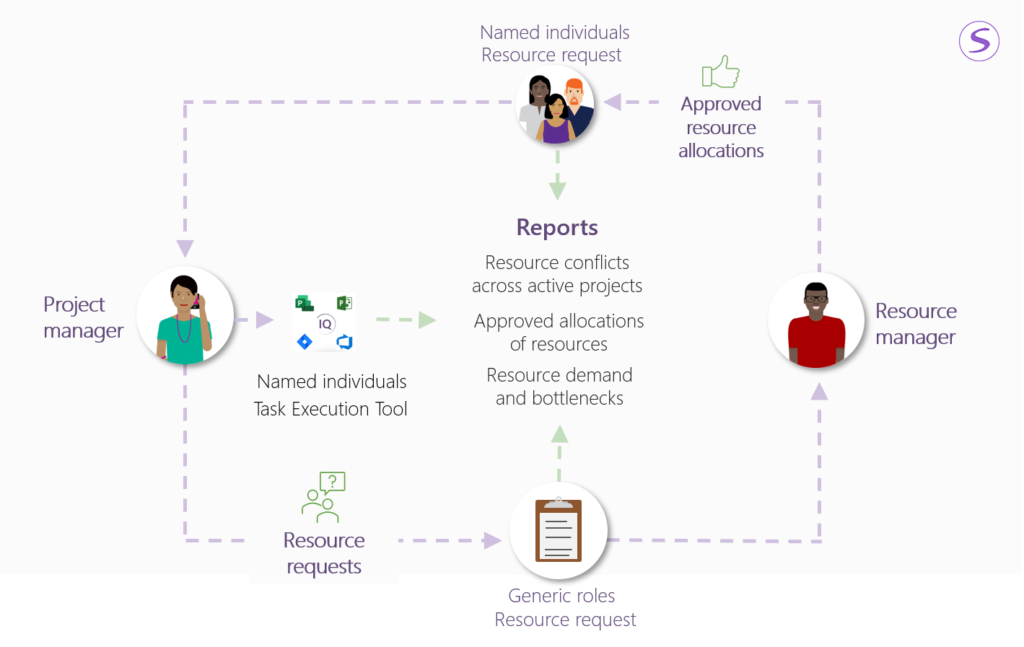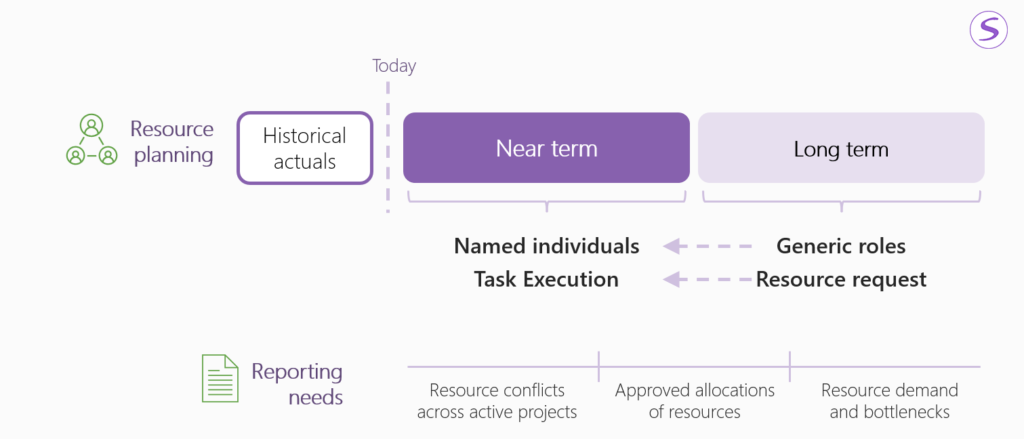The last few years have shown us how critical our people are to our businesses and how important it is to work hard to look after them. By optimising your workforce and allocating your people effectively across projects, it will not only improve morale for your people, but you will also see your organisation’s operational efficiency surge.
When managing projects with a variety of resources across an organisation, timesheets are essential. Useful for the PMO and the wider organisation, timesheets provide an actual tracking of workloads and allow better work and project monitoring.
Efficient PMOs and business departments make full use of comparing actual work with forecast work, monitoring resource utilisation and balancing and optimising their resources to improve project performance and business operational performance. Following some of the key discussion points from our recent webinar, Managing Resources & Timesheets for your PMO, the blog post below covers how you can achieve accurate resource and time tracking management providing a competitive advantage for your PMO and the wider organisation.
Resource Management Best Practices
Resource Scheduling in Project Management
Having project managers and resource managers collaborate in a single scheduling tool is key, along with having real-time data and the ability for ongoing monitoring and adjustments as priorities change.

Step 1: Project Manager requests resource plan
- The first step in this process is for the project manager to submit a formal resource plan request. Ideally, this should be done at the project proposal stage, using generic roles instead of named individuals, especially to support capacity planning which can be done months in advance.
Step 2: Resource Manager approves resource allocations
- To approve the resource plan request, the resource manager will need to determine who is most appropriate for that particular role and be able to see their availability. The resource manager can then approve a named resource for the project as requested by the project manager.
Step 3: Project Manager assigns work to the approved resource
- Once the requested resource has been approved and named, the project manager is then able to utilise the committed allocation of the resource and build out the detailed schedule with various task assignments.
Near Term vs Long Term Planning
To fill the multiple requirements of resource management, it is critical to identify and plan for near term and long term requirements. Whilst this is a very common practice, many businesses struggle to effectively plan and prioritise both.

Near term planning is the ability to effectively manage resources day-to-day, gaining an overarching view across all current project schedules. To manage delivery effectively and confidently, portfolio, resource and project managers need to be able to see which resources are not only allocated but are being utilised.
Visibility of current work, committed work and resource availability ensures teams and people are not being under-utilised, or over-worked and at risk of burnout, particularly for those people with unique skillsets. When near term planning, organisations are also able to quickly resolve bottlenecks as they can adjust resources to meet new requests or urgent changes to scope.
A long term planning approach enables organisations to look at resource demand further into the future without the need to specify named individuals right away. When coupled with an understanding of team capacity, this enables organisations to anticipate hiring needs and to match their demand with recruiting timelines.
Organisations with visibility across their resource pool can optimise mapping between resource availability and upcoming work schedules, putting themselves in the position to deliver strong, longer-term business value.
Benefits of Resource Management
- Resource visibility and optimisation
- Ability to optimise resource utilisation by prioritising high-value work with available resource capacity.
- Resource capacity planning (long term planning):
- Utilising data to reliably define actual timelines for future projects based on resource availability.
- Eliminating the burn-out effect
- Being able to provide objective methods to prioritise work ensures demand is balanced against capacity to deliver, minimising the risk of overworking resources.
- Increase business value
- By achieving operational efficiency and prioritising resources against strategic programs that drive innovation and transformational change.
Resource & Timesheet Management for your PMO
We know that timesheets are essential when managing projects with a variety of different resources across an organisation, but how can you deal with the age-old problem of managing your timesheets?
There could potentially be several ways your organisation creates and manages timesheets, and whilst most timesheet software helps make the finance and reporting process easier and less tedious, it often fails to provide organisational value and visibility beyond tracking time. To achieve unity between your business’s utilisation tracking, resource management and project management practices, an effective PMO technology solution can provide increased business value.
With an intuitive and integrated PMO solution, like Altus, efficient resource and timesheet management will give your organisation global visibility of your current and future resource demands, achieving accurate tracking of workloads and allowing for effective work and project monitoring.
As discussed above, the PMOs that make full use of comparing actual work with forecast work, and optimising their resources, improve project performance and business operational performance.
Benefits of Resource & Timesheet Management
- Improved decision making thanks to increased visibility and reliability
- Project time reporting gives your teams insight into where time is being spent and how to focus on the right work and make better resource decisions.
- Aids resource & cost allocation
- As project time reporting shows how much time resources spend on their work, it allows businesses to allocate time spent to specific projects, enabling accurate costing for the project.
- Accurate revenue generation
- By understanding how much resource time is being spent on innovative projects versus business-as-usual work, it helps to keep the organisation focused on allocating resources to programs that drive strategic value and business outcomes.
- Estimates/forecasts are more accurate
- Project planning and time tracking come together to provide the data needed to accurately estimate the resources required for similar projects moving forward, with a high degree of certainty.
To learn more about how you can best manage your resources and timesheets, view our below best practices video to see how resource management can work for you, ensuring simplicity and transparency for your business processes.
If you’re not sure how to get started, get in touch with Sensei PPM experts directly and let us show you how it can be done!
By Marc Soester
Marc Soester is an Executive Director at Sensei and has over 18 + Years experience in being a PPM and Work Management Subject Matter Expert, he has been part of over 250 PPM implementations and is an Industry Standard Expert on PMI, P3O, Scaled Agile. Marc was also the first Microsoft Project MVP and is an active member of the Microsoft Product Advisory Council.



